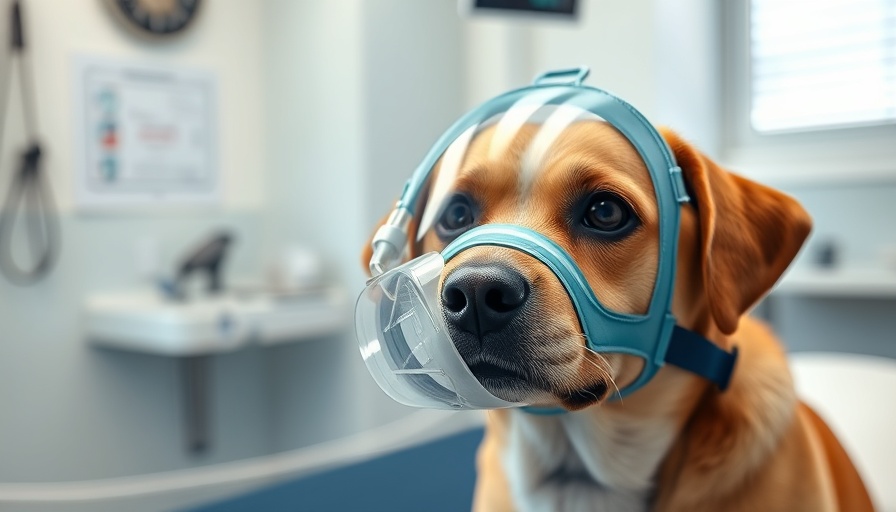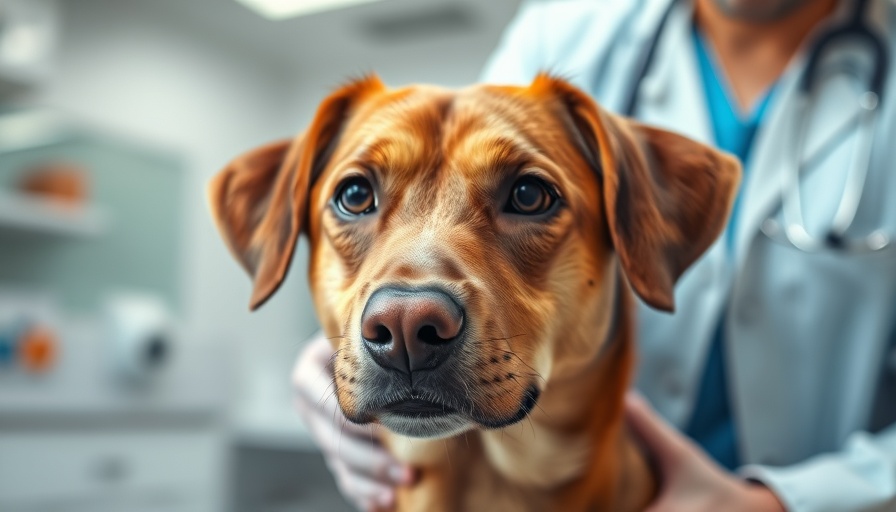
Understanding the Basics of Laryngeal Paralysis in Dogs
When a beloved dog begins to struggle with breathing, it can evoke panic and fear in any pet owner. Laryngeal paralysis, often mistaken for the common signs of aging, is a condition that affects many older dogs, leading to troublesome respiratory distress. As pet owners, recognizing the signs early can significantly enhance your furry friend's quality of life.
What Exactly is Laryngeal Paralysis?
The larynx, commonly referred to as the voice box, plays a critical role in your dog’s respiratory system. This intricate structure consists of cartilage and muscles that work together to facilitate airflow into the lungs, protect the airway while swallowing, and produce barking and vocal sounds.
When the nerves that control the opening of the larynx become weak or paralyzed, it can prevent the larynx from opening properly. This results in airway obstruction, making breathing harder and potentially leading to dangerous conditions like pneumonia.
Common Symptoms to Watch For
Many owners dismiss early signs of laryngeal paralysis as mere aging, but being vigilant about your dog's behavior can make a difference. Typical symptoms include:
- Noisy breathing or stridor
- Hoarse barking or cough while eating
- Loud panting or increased effort in breathing
- Signs of respiratory distress during excitement or exercise
- Coughing or gagging after drinking water
- Collapse or lethargy
Recognizing these subtle signs early can lead to timely interventions that may improve your dog's comfort and overall health.
The Connection to Geriatric Onset Laryngeal Paralysis Polyneuropathy (GOLPP)
GOLPP is a form of laryngeal paralysis that particularly impacts older, large-breed dogs. Not only does it affect breathing, but it can also compromise mobility, swallowing, and nerve function in other areas. This multifaceted condition can lead to serious implications if not addressed promptly, including a higher risk for pneumonia and other respiratory complications.
Pet owners should consult their veterinarian as soon as they notice any of the symptoms described above. Early diagnosis and treatment can provide relief and improve your dog's quality of life.
Management and Treatment Options
The good news is that laryngeal paralysis is manageable. Options for treatment include:
- Lifestyle Adjustments: Weight management and avoiding strenuous activities can ease the strain on the respiratory system.
- Natural Therapies: Treatments such as acupuncture and specific exercises can help strengthen the muscles around the larynx.
- Surgical Intervention: In severe cases, veterinarians may recommend procedures like tie-back surgery, which can provide a longer-term solution.
The Importance of Regular Vet Check-ups
For pet owners, regular veterinary visits become even more crucial as dogs age. Not only does this help catch any potential issues early, but it also allows for discussions around preventive care strategies specific to your dog's needs. Engaging with a veterinarian who understands your dog's particular health risks can lead to early interventions that greatly enhance their quality of life.
Conclusion: Taking Action for Your Pet's Health
As devoted pet owners, it's our responsibility to stay informed about our furry companions' health. Laryngeal paralysis, while alarming, can be managed effectively, leading to a happy life for your canine friend. If you've noticed changes in your dog's breathing or behavior, don't hesitate to reach out to your veterinarian. The earlier you act, the better the outcomes for your beloved pet. Let's ensure every breath they take is a comfortable one!
 Add Row
Add Row  Add
Add 




Write A Comment